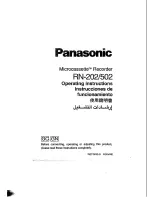
LSI Logic Confidential
8-4
Host Slave Interface
Copyright © 2001, 2002 by LSI Logic Corporation. All rights reserved.
8.1
Async Slave Interface with Host DMA
The flexible DMN-8600 Host bus interface offers many options for
configuring the following host interface controls:
•
Configurable 16/32-bit demultiplexed address/data bus
•
Separate WR or RD strobes (I-mode) or single CS strobe with a
single WR signal (M-mode)
•
Asynchronous control signals
•
WAIT and DTACK signals for slow response time
•
Host DMA target
The Host interface provides internal register and SDRAM accesses to an
external microcontroller (Host) to configure and control DMN-8600 data
transfers. The Host Processor interface receives slave transfer requests
from an external host and internally arbitrates the transfers. The Host
interface does not support burst transfers.
The slave interface provides a FIFO buffer between the internal DMA
channel and the bitstream pins. All internal DMA reads transfer data from
the bitstream FIFO to SDRAM, and internal DMA writes transfer data
from SDRAM to the bitstream FIFO.
8.2
Async Slave Interface Transfer Modes
The Host interface offers two distinct ways to manage bitstream
transfers:
•
32-bit and DMA 32-bit I/O mode (Mode A)
•
16-bit and DMA 16-bit I/O mode (Mode B)
Each mode requires specific configuration through the Host interface.
8.2.1
Transfer Mode A
The Host interface can be configured such that both the programmed I/O
transfers and DMA transfers are 32 bits wide. This transfer mode uses
the Host interface read/write protocols called I-mode and M-mode.
















































